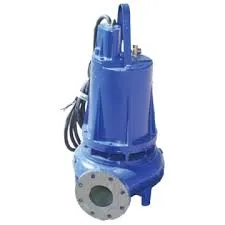Turkish
- Afrikaans
- Albanian
- Amharic
- Arabic
- Armenian
- Azerbaijani
- Basque
- Belarusian
- Bengali
- Bosnian
- Bulgarian
- Catalan
- Cebuano
- Corsican
- Croatian
- Czech
- Danish
- Dutch
- English
- Esperanto
- Estonian
- Finnish
- French
- Frisian
- Galician
- Georgian
- German
- Greek
- Gujarati
- Haitian Creole
- hausa
- hawaiian
- Hebrew
- Hindi
- Miao
- Hungarian
- Icelandic
- igbo
- Indonesian
- irish
- Italian
- Japanese
- Javanese
- Kannada
- kazakh
- Khmer
- Rwandese
- Korean
- Kurdish
- Kyrgyz
- Lao
- Latin
- Latvian
- Lithuanian
- Luxembourgish
- Macedonian
- Malgashi
- Malay
- Malayalam
- Maltese
- Maori
- Marathi
- Mongolian
- Myanmar
- Nepali
- Norwegian
- Norwegian
- Occitan
- Pashto
- Persian
- Polish
- Portuguese
- Punjabi
- Romanian
- Russian
- Samoan
- Scottish Gaelic
- Serbian
- Sesotho
- Shona
- Sindhi
- Sinhala
- Slovak
- Slovenian
- Somali
- Spanish
- Sundanese
- Swahili
- Swedish
- Tagalog
- Tajik
- Tamil
- Tatar
- Telugu
- Thai
- Turkish
- Turkmen
- Ukrainian
- Urdu
- Uighur
- Uzbek
- Vietnamese
- Welsh
- Bantu
- Yiddish
- Yoruba
- Zulu
Telephone: +86 13120555503
Email: frank@cypump.com
Ara . 31, 2024 16:06 Back to list
Electric Submersible Pump for Efficient Slurry Transport in Various Applications
Understanding Electric Submersible Slurry Pumps Technology and Applications
Electric submersible slurry pumps are integral components in various industries that require the efficient movement of heavy, abrasive slurries. These pumps are designed to operate while submerged in the slurry, allowing them to handle thick mixtures of liquid and solids, such as sewage, coal slurry, and mining applications. This article will unpack the fundamental principles of electric submersible slurry pumps, their design, advantages, and diverse applications.
Basic Design and Operation
Electric submersible slurry pumps function by converting electrical energy into mechanical energy. The pump is typically composed of a motor, an impeller, and a volute. The motor is hermetically sealed to prevent water ingress, thus ensuring durability and reliability in harsh environments. The impeller's design is crucial, as it is responsible for lifting the slurry from its source and propelling it through the discharge outlet.
The operation is relatively straightforward; as the motor spins the impeller, the impeller blades create a vacuum that draws the slurry into the pump. Once inside, the slurry is accelerated and moved toward the discharge pipe. The submersible design allows for close proximity to the slurry source, reducing the energy required to pump the material and minimizing the risk of sediment settling, which can create blockages in other types of pumps.
Advantages of Electric Submersible Slurry Pumps
1. High Efficiency Electric submersible slurry pumps are known for their efficiency in moving thick slurries. Their design allows for a high flow rate and the ability to handle larger particles than standard centrifugal pumps.
2. Cost-Effective By employing electric power instead of diesel or gas, these pumps can significantly reduce operational costs, especially in large-scale operations where fuel consumption might be high.
3. Compact Design The submersible design means that the pump does not require extensive above-ground infrastructure, which can save space and costs on installation and maintenance.
4. Less Maintenance With fewer moving parts exposed to the elements, these pumps typically require less frequent maintenance. The enclosed motor reduces wear from external conditions, prolonging the pump's life.
electric submersible slurry pump

5. Versatile Applications These pumps can effectively handle a wide range of abrasive materials and heavy liquids. This versatility makes them suitable for various industries including mining, construction, wastewater management, and agriculture.
Applications
Electric submersible slurry pumps find use across several industries
- Mining They are essential in the extraction and transportation of mineral slurries. The ability to handle high solids content makes them ideal for this application.
- Construction In dewatering applications, these pumps remove excess water mixed with soil or other materials from construction sites, maintaining safe working conditions.
- Wastewater Treatment They are utilized to manage sewage and sludge, helping water treatment facilities maintain effective processing of waste.
- Pulp and Paper Industry The pumps are used to transport pulp and other slurry materials, showcasing their adaptability to different types of slurries.
- Agriculture In agri-food processing, they aid in moving mixtures containing solids, such as slurry manure, making them indispensable in modern farming practices.
Conclusion
Electric submersible slurry pumps represent a blend of innovative engineering and practical application across multiple industries. Their robust performance under challenging conditions, coupled with their efficiency and cost-effectiveness, makes them a vital asset for anyone dealing with the complexities of slurry handling. As technology advances, these pumps will likely become even more efficient and reliable, continuing to serve critical roles in industries worldwide. Understanding their capabilities and optimizing their use can lead to significant improvements in operational efficiency and resource management, paving the way for future innovations in slurry handling systems.
-
ISG Series Pipeline Pump - Chi Yuan Pumps | Energy Efficiency&Compact Design
NewsAug.03,2025
-
ISG Series Vertical Pipeline Pump - Chi Yuan Pumps Co., LTD.|High Efficiency, Low Noise, Durable
NewsAug.02,2025
-
ISG Series Vertical Pipeline Pump - Chi Yuan Pumps | High Efficiency, Low Noise
NewsAug.02,2025
-
ISG Series Vertical Pipeline Pump- Chi Yuan Pumps Co., LTD.|High Efficiency&Compact Design
NewsAug.02,2025
-
Heavy-Duty Mining Sludge Pumps - Wear-Resistant Slurry Handling
NewsAug.02,2025
-
Horizontal Split Case Pump with GPT-4 Turbo | High Efficiency
NewsAug.01,2025










